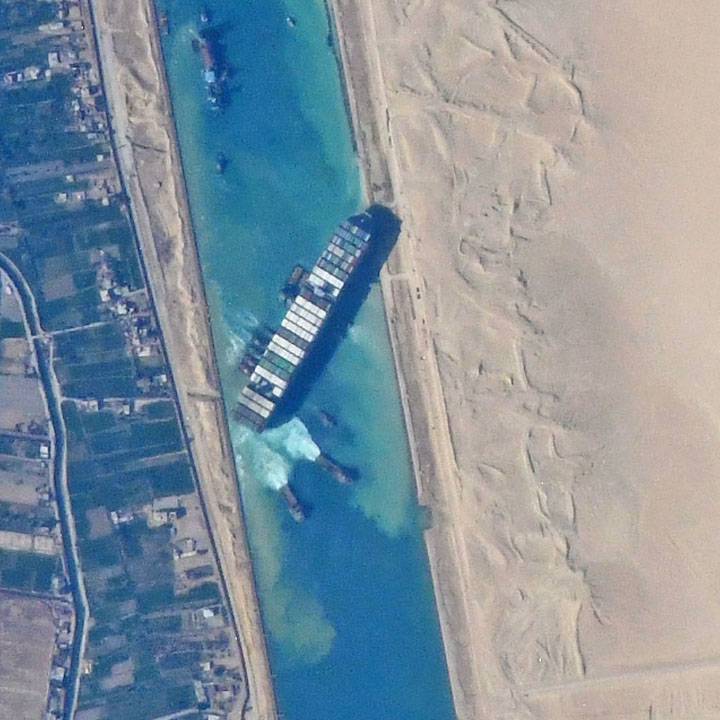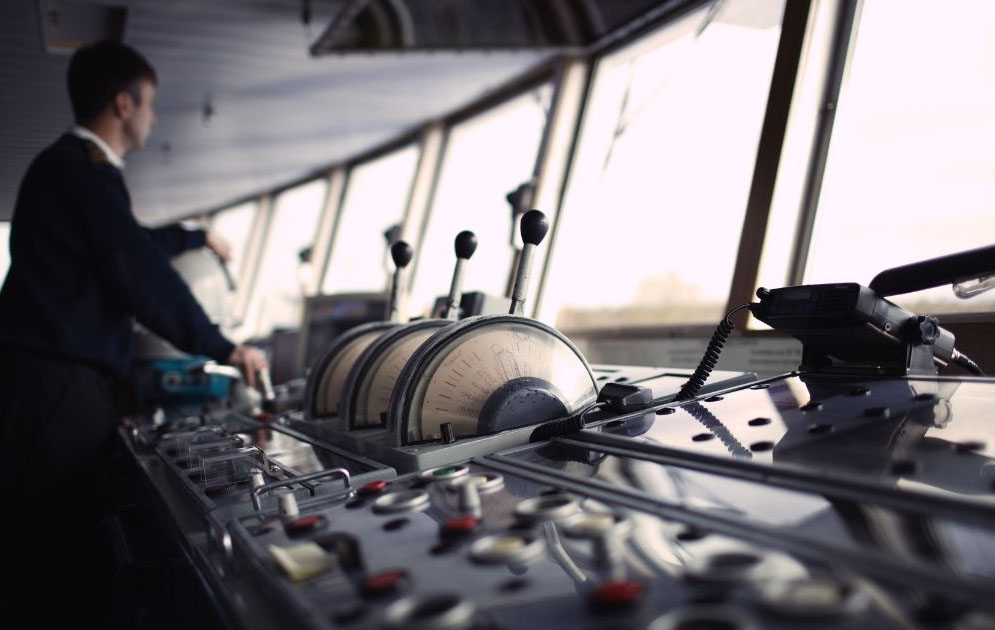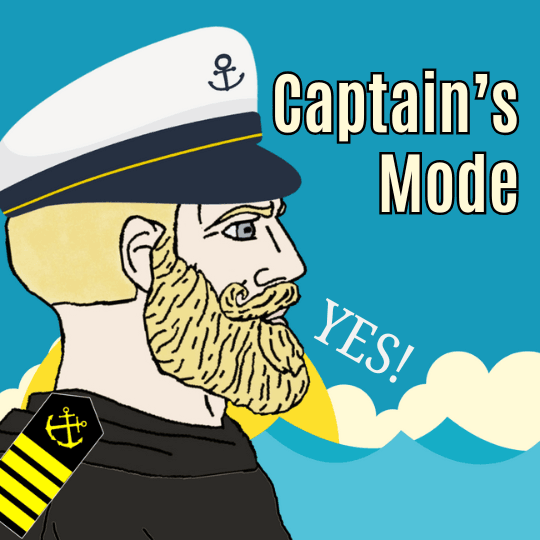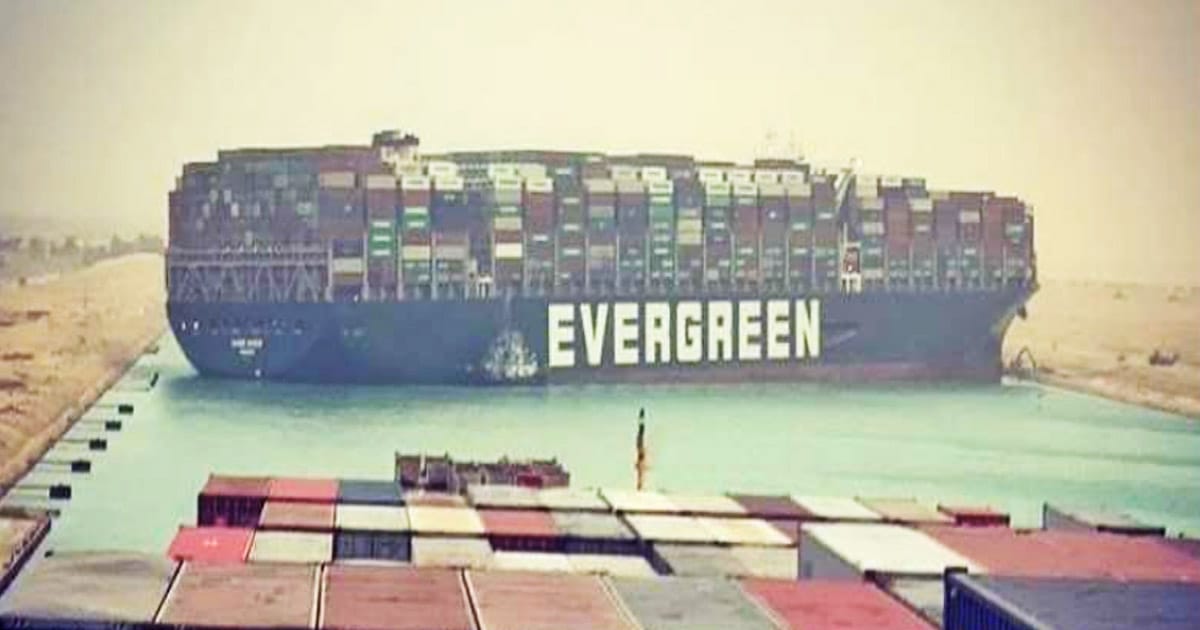The colossal container ship Ever Given rammed the east bank of the Suez Canal 25 minutes after the pilots boarded and blocked the entire waterway for six days.
Due to gusty winds and human error, the mega-ship swung out of control in the early morning of Tuesday, March 23, 2021, while carrying 10,788 containers.
According to Lloyd’s List Intelligence, this unprecedented incident disrupted global shipping and caused economic damage of $400 million per hour.
Understanding the factors that led to this incident is crucial for enhancing maritime safety and preventing similar occurrences in the future.
Ever Given and Suez Canal Background
M/V Ever Given
Ever Given is a large, 400-meter container ship owned by the Japanese firm Higaki Sangyo Kaisha, Ltd.
Launched in 2018, Ever Given is classified by the American Bureau of Shipping (ABS) and flying under the Panamanian flag.
Here are some key details about the ship.
Key Specifications:
- Length Overall: 399.98 meters (1,312 feet)
- Breadth (Moulded): 58.80 meters (193 feet)
- Summer Draft: 16.025 meters (52.5 feet)
- Stowage Capacity: 20,124 containers (including 1,273 reefers)
- Propulsive Power: One main engine (MITSUI MAN B&W, Type 11G95ME-C9.5). Total output is 53,370 kW.
Suez Canal
The Suez Canal is a crucial maritime route that connects the Mediterranean Sea to the Red Sea.
The canal facilitates international trade by allowing ships to avoid the lengthy journey around the southern tip of Africa.
Key Specifications:
- Total Length: 193.3 kilometers (120 miles)
- Max Width: 313 meters (1,027 feet)
- Depth: 24 meters (78.7 feet)
- Ownership and Management: Suez Canal Authority (SCA).
Suez Canal Sectors
Suez Canal may be divided into three main sectors as follows:
- A- Northern Sector: Located between the Port Said and the Great Bitter Lakes.
- B- The Lakes: Timsah and Great Bitter Lakes.
- C- Southern Sector: Located between Port Suez and the Bitter Lakes. It’s here that Ever Given ran aground.
Here’s an animated video on the moments Ever Given ran aground and blocked the canal.
Sequence of Events Leading to the Grounding of M/V Ever Given
The Voyage Data Recorder, or VDR, is an important piece of equipment investigators use to reconstruct the event.
Based on VDR data analyzed after the grounding, here are the timestamped events inside the ship’s bridge.
Events Timeline
- 05:48 HRS / LT: The first Pilot boarded the vessel.
- 07:16 HRS / LT: Second Pilot (two of them) boarded for the pilot change.
- 07:20 HRS / LT: The first Pilot disembarked. The Master conducted an exchange of information with the relieving pilots.
- 07:20 HRS / LT: Wind started picking up.
- 07:32 HRS / LT to 07:39: The two pilots argue using Arabic.
- 07:38 HRS / LT: Helmsman reported that the vessel had stopped turning to port and was starting to turn to starboard.
- 07:40 Hrs / LT: One of the pilots calls tug MOUAN for help.
- 07:41 HRS / LT: M/V Ever Given ran aground at 12 knots on the eastern bank of the Suez Canal at 30° 01.059′ N / 032° 34.810′ E.
Weather Conditions and Navigational Challenges
- Wind Speed: 25-27 knots. Gustiness up to 40 knots.
- Wind Direction: Southerly (S’LY).
- Visibility: Over 5 miles, but sometimes reduced due to sand.
- Sea Conditions: Force 6 on the Beaufort scale, indicating a strong breeze with rough conditions.

Key Findings of the Investigation
During the accident inspection, it was discovered that the vessel was free of navigational or mechanical deficiencies.
Still, the contributing factors were mainly the combination of meteorological conditions and human factors:
1. Wind Effect
M/V Ever Given has a large windage area, and the shifting wind directions and their gustiness made maneuvering difficult for the ship.
2. Squat, Bank Suction, and Bank Cushion Effects
I touched on this topic in my article about overtaking in narrow channels.
In Ever Given’s case, his overspeeding (12 knots) causes the hydrodynamic effects under the hull to intensify, causing the following:
- Squat Effect
- Bank Suction
- Bank Cushion
These forces reduce the ship’s responsiveness to steering commands.
3. Navigation decisions by Pilots
The two pilots’ orders have not been in accordance with best practices since the beginning of the transit.
These were observed in the VDR:
- Not considering the bad weather conditions.
- Not requesting tug assistance.
- Ship’s speed was higher than the recommended SCA rules.
- Not using English language.
- Giving “hard port/ starboard” commands to the helmsman instead of course orders.
- Not considering the effects of squat, bank suction, and bank cushion.
- Not requesting assistance from the Master.
- Breaking the speed limit of 8.64 knots versus Ever Given’s 12 knots.
- Steering the ship off the planned track.
- Pilots did not cooperate with the bridge team.
4. Inadequate Intervention by the Bridge Team
Despite the developing events, the bridge team failed to step in and take control of the situation.
In particular, it was noticed that the Master and Bridge Team:
- Did not implement the passage plan since the vessel was off course.
- Had no open and clear communication of risks.
- Captain’s interventions were not effective.
- Two pilots on board might have led the captain to overconfidence.
- The pilots were always in charge of controlling the orders.
5. Pilots Role
The Pilot’s role is an advisor to the Master, but this was not clearly defined.
If the Master allows the Pilot to give orders directly (this was the case here), these orders are still considered carried out under the Captain’s sole responsibility.
As per Suez Canal rules, although pilotage is compulsory, the Master always retains responsibility.

Conclusion
The grounding of Ever Given in the Suez Canal highlights how complex factors—from human decisions to challenging weather—can create severe issues in maritime navigation.
The investigation clearly shows that overspeeding, miscommunications, and environmental effects played major roles in the incident.
With larger vessels and increasingly busy routes, enforcing these safety practices and clearly defining roles between pilots and ship captains isn’t just helpful, it’s essential.
Taking these steps can reduce the risk of future blockages, keeping global trade on course and safer for all involved.
Source: Ever Given Final Investigation Report | Panama Maritime Authority
May the winds be in your favor.


Leave a Reply